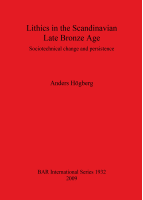Description
BOOK DESCRIPTIONSome time just after 900 BC a tool was introduced with a shaft of wood and a knife blade of flint. It was manufactured and used for cutting and reaping over a large geographical area. It was included in the ritual depositions of the age. Over time the original intention of making knife blades for a composite tool was renegotiated. The tool became part of a dynamic between old and new, for example, through manufacturing sites, use, and deposits. This original study discusses how interaction between actorsand 'actants' during the Late Bronze Age in the area of modern southern Scandinavia created socio-technical networks of change and persistence. Flint technology was a palpable part of this, contributing to a technical shaping of society. At the same time, there was a social shaping of technology. By focusing on manufacturing sites and different ways of making large flint blade-knives the author emphasizes the dynamic between different claims in society, between two social groups - the institution of the transformer and the institution of the innovator. Large flint blade-knives were a point of reference to certain ideas about new technology in the form of the use of flint and iron. This was the dynamic that gradually marginalized older positions of power,and over a long time it had the effect of shaping society in a new way. The author's findings show that this was not to do with a direct change between 'Bronze Age' and 'Iron Age': there was something else in between. This 'something else' has not been formulated before and the results demonstrate how intentions and consequences do not necessarily follow straight lines. Nevertheless, a consequence was - just before 500 BC - that society changed: iron attained widespread distribution and the large flint blade-knives disappeared.











